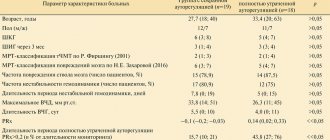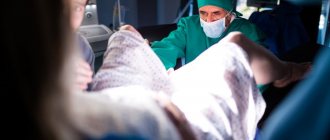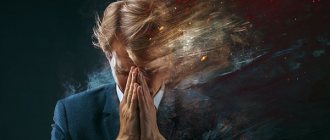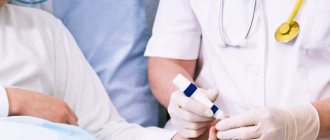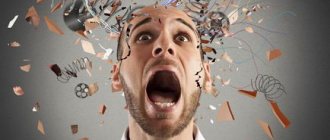Causes of acne
Acne is one of the most common skin diseases.
It is generally accepted that 4 pathogenetic factors play a major role in the occurrence of acne:
- follicular hyperkeratosis;
- increased activity of the sebaceous glands;
- excessive amounts of pathogenic bacteria P. Acnes;
- inflammation and immune response.
These classic links in pathogenesis apply to all types of acne , but when it comes to late acne in women, the following reasons become more and more clear:
- genetic predisposition;
- hormone levels;
- diets;
- smoking;
- stress.
Let's look at the last point in a little more detail.
Back in 1949, Sulzberger and Zaidens wrote: “There is probably no other disease that causes more mental stress, misunderstandings between children and parents, more general self-doubt and feelings of inferiority, and a great deal of mental suffering than acne vulgaris.”
This statement fully reflects how acne contributes to the formation of mental and adaptation problems, but the reverse relationship: stress as a cause of acne formation has been discussed relatively recently.
In physiology, stress is synonymous with general adaptation syndrome.
General Adaptation Syndrome is a set of protective adaptive mechanisms of the body aimed at preserving and maintaining the integrity of the body under conditions of a long-term stressor.
The depth and duration of stress depend on the strength and duration of the damaging factor - the stressor.
A stressor is not only nervous tension or emotional discomfort.
The main stressors in our lives:
- lack of sleep;
- pain:
- hypoxia;
- various antigens (excessive use of drugs, habitual intoxications, frequent viral and bacterial infections);
- strict diets (deficiency of macro- and microelements);
- unfavorable climatic conditions (excess and lack of UV rays);
- psycho-emotional and social pressure from society.
Thus, more and more scientists agree that stress can not only occur as a reaction to diseases and pathological conditions of the skin, but also in itself worsen the health of the skin.
The appearance of acne due to nervousness50
Emotions are the most characteristic manifestations of human mental activity. They are accompanied by endocrine and autonomic changes, which are associated with the release of various hormones, for example, stress and androgens. Hair follicles and sebaceous glands have androgen-dependent receptors; their stimulation significantly increases sebum production, which can cause seborrhea, dyskeratosis, and maintain local inflammation.
High androgen levels may be associated with physiological factors, for example, in women their levels increase before menstruation, and in adolescents during puberty. But the concentration of androgens can also increase due to emotional experiences or stressful situations, this explains the appearance of acne* due to nervousness.
An increase in the production of adrenocorticotropic hormone leads to an increase in the production of androgens and glucocorticosteroids by the adrenal cortex. An increase in the level of the latter can cause inhibition of the phagocytic component of immunity, reduce the activity of macrophages, and create conditions suitable for increasing the colonization of propionibacteria inside the pilosebaceous follicle. Increased production of adrenaline stimulates lipogenesis, which can maintain inflammation.
What explains such a close relationship between stress and acne?
Under stress, two hormonal systems are activated and an increased amount of cortisol is produced, and the concentration of adrenaline also increases.
Stress hormones have both systemic and local effects, including on the skin.
Glucocorticoids produced in the body during stress suppress the secretion of the skin's own lipids and thereby worsen the skin barrier function.
And given the fact that dermatological drugs prescribed for acne often thin the skin barrier, these new data allow us to be especially careful about restoring the hydro-lipid mantle in patients with acne.
Treatment of acne* on the face for nerves
If acne* appears due to nerves, in addition to basic drug treatment, you may need to prescribe sedatives and consult a psychologist. Appointments between the dermatologist and other specialists must be coordinated.
Azelik®5 gel can be used in the treatment of mild to moderate acne. This is an azelaic acid preparation that has the following effects5:
- exhibits antimicrobial activity against Propionibacterium acnes and Staphylococcus epidermidis;
- contributes to the normalization of keratinization processes;
- helps reduce fatty acid levels;
- helps reduce inflammation by reducing neutrophil metabolism and their synthesis of free radical oxygen species.
The first results from treatment with Azelik® gel, as a rule, become noticeable after 4 weeks of its use5.
Third stress system?
Relatively recently, a theory arose that in addition to the two classically known stress systems, there is a third one, and its fibers are located directly in the skin and, moreover, their terminal processes penetrate the most superficial layers of the epidermis.
Pavlovic S. and a group of comrades demonstrated during experiments that peripheral nerve fibers are capable of transmitting stress impulses to the skin, increasing inflammatory processes in it.
And since inflammation is one of the key links in the development of acne, serious research and development of external cosmeceuticals began, aimed at inhibiting the activity of the third stress system.
How does sport help fight stress?88
Here are 4 reasons to exercise:
- Anxiety will decrease. Scientists have concluded that physical exercise leads to a decrease in the electrical activity of muscles. As a result, the person becomes calmer.
- You will be able to relax. Many people who lead an active lifestyle claim that they feel post-workout euphoria, there is another name for this feeling - the endorphin response. Exercising in the gym, dancing or jogging can give you 1.5-2 hours of good mood. You will feel in high spirits, even if your muscles ache.
- Self-esteem will increase. After training, a feeling of inner satisfaction arises; a person praises himself for coping with laziness, for the work done, especially if its result is already visible. This reduces your stress levels significantly.
- Normalization of nutrition. People who exercise tend to be better at monitoring what and when they eat. Considering that acne can also be caused by nutritional factors, normalizing nutrition will also help improve skin condition.
Is it possible to do without antibiotics?
In severe cases, treatment may be required from different specialists: not only from a dermatologist, but also from an endocrinologist and gynecologist. Treatment may also include low-dose forms of antibiotics; they are prescribed in dosages that allow the therapy to be extended for several months and to achieve an anti-inflammatory effect rather than an antibacterial one. Depending on the results, the doctor may combine antibiotics with other drugs.
The gold standard for topical acne treatment is a combination of retinol (a form of vitamin A) and the antimicrobial basiron, which is not inherently an antibiotic, but when interacted with the skin in a certain way produces free oxygen that kills P. acnes,
bacteria, since it can only live in an oxygen-free environment.
In some cases, your doctor may prescribe antiparasitic medications. At the discretion of the doctor, oral antibiotics may also be prescribed. And only after this - a competent course of probiotics and bacteriophages to restore the intestinal microflora. Taking probiotics and antibiotics together is not effective!
Link to publication: kiz.ru
The circles under the eyes have become more pronounced
The main reasons for the appearance of circles under the eyes are considered to be fatigue, heredity, stress and age-related changes. If the circles under the eyes have a bluish tint, the reason is poor functioning of the circulatory system due to age-related changes or a genetic factor. A brown tint indicates that your skin is becoming thinner over time. And finally, sunken circles under the eyes are the result of the resorption of fats that were located between the skin and the orbital bone. Under-eye circles are a reflection of general fatigue, which can be caused by stress or weight loss, possibly caused by strong emotions, and they can also be a sign of age-related changes. Our beauty recipe: 3 in 1 eye skin product Luminexpert: Combating signs of fatigue, Smoothing effect, Against circles under the eyes, eliminates signs of fatigue, smoothes the skin around the eyes and makes circles under the eyes less noticeable thanks to a complex of elements that brighten on a physiological level . It contains tint components for an instant corrective effect. Its advantage: The metal tip gives a fresh effect.
Do only young people get sick?
Acne most often develops in girls under 25 years of age. But the disease does not go away with age. Moreover, over the years, acne “ideas” become more and more inventive. Purulent nodes, painful phlegmonous acne, deep scars and even potholes appear. There is no point in fighting acne with improvised products bought on the advice of a friend, Instagram or even a pharmacist. There is no guarantee that grandmother’s recipes, tested over the years, will help.
Acne is a personalized disease, that is, it occurs differently for everyone, so treatment must be individualized. Self-medication will aggravate the process and delay it for several years. Only systemic therapy, which is prescribed by a doctor, will help solve the problem, and he also monitors the result and course of the disease.
How quickly can acne be cured?
Treatment is quite long, because acne is accompanied by periods of remission and exacerbation. You can finally cope in at least six months, or even eight months. The fact is that the skin cell renewal cycle is 28–32 days. During this time, we will not understand how effective the treatment is; at least three layers of skin cells need to be renewed during therapy. If you neglect this condition, you can get a post-acne symptom complex - a large number of rashes, age spots, atrophic and hypertrophic scars, milia (horny cysts of the upper layer of skin).



